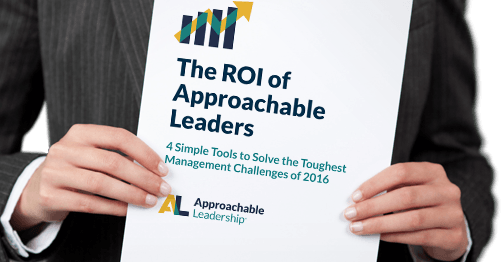
The Future of Work: 5 Ways Leadership Will Change in an AI Economy (Part 2)
The Future of Work: 5 Ways Leadership Will Change in an AI Economy (Part 2)
There are 5 ways work will change in an AI economy
In our last post we looked at the ways AI and new technology is likely to impact our workplaces. Bottom line: work will change a LOT over the next 5-10 years. As I said in the last post, this means we have to “level up” our leadership skills. One of the best articles I’ve seen on the key skills needed for the new economy suggests 5 critical ways work (and leadership) will change in an AI economy. Here they are:
1. The corporate ladder will transition into a corporate lattice.
“Rather than moving in one direction, ambitious employees will be able to move sideways, tapping into new networks.” We’re already seeing this with the rise of the gig economy. And with millennials in the workforce who want careers with more flexibility and freedom to operate.
Phillip De Ridder, co-founder of The Board of Innovation, says that one of the ways for corporations to do this is through a series of “intrapreneurship” programs. These programs encourage employees to “think and act like entrepreneurs within the confines of their company.” Zappos is a great example of a company who has integrated this dynamic in their workplace. (For more, read our article on Creativity and Frontline Employees here).
2. Job loss to robots will be major.
Jerry Kaplan is a Silicon Valley entrepreneur and teaches a class on AI at Stanford. He believes that robots and intelligent computers “are going to have a far more dramatic impact on the workplace than the internet has.” Recent reports concur. A 2013 study by the Oxford Martin School estimated that “47% of jobs in the US could be susceptible to computerization over the next two decades.” And a study by the McKinsey Global Institute predicted that by 2025 “robots could jeopardize between 40m and 75m jobs worldwide.”
3. The human cloud of freelancers will continue to creep in.
Websites that match employers with freelancers are growing at a remarkable rate. In fact, the McKinsey study estimates “that by 2025 some 540 million workers will have used one of these platforms to find work.” The benefits of companies using these services are obvious. It’s cheaper. You pay by the project. Employers save in healthcare costs, additional taxes, and providing benefits.
However, the ultimate effect on the economy is still unknown. Some argue that because some of these sites include a bidding process encouraging the lowest bid to prevail, wages will go down and inequality will increase. I personally think these fears are overstated. While many will pick the lowest bidder, these sites also drastically reduce barriers to entry, especially to historically disadvantaged populations. And if you’ve ever used a freelance site you know that price is only one place where freelancers compete and that often you get what you pay for.
4. Technology will be used to monitor staff.
The most common application of self-monitoring involves health (you probably have a monitoring device on your wrist or in your pocket). Companies are encouraging their staff members to wear devices that count things like steps, calories burned, hours slept. The idea here is that not only will an effort to improve one’s health lower healthcare costs for the organization. There’s also quite a bit of data on the effects of overall health on workplace performance. In 2014, around 10,000 companies offered their staff fitness trackers.
Health is only one application of these technologies. There are many others. And some of them get downright Orwellian. But there are many positive possibilities. While you can use these technologies to increase productivity and efficiency, they can also be used to decrease stress, fatigue and improve safety and quality.
5. The age of retirement will climb.
This expectation has less to do with technology and AI and more to do with the fact that people are living longer. The average life expectancy has increased globally by six years since 1990. Governments are having a hard time funding pensions for the longer-living population. Also, people are struggling to save for their longer retirement. The most important lesson leaders can take from this is to not give up on your older team members. Provide programs that help your older workforce continue to adapt to the changing landscape of work.
How these changes will impact leaders – and how Approachable Leaders can ease the transition.
Being a more approachable leader can help our teammates handle all five of the changes listed above. Additionally, focusing on your own approachability is a great way to help ensure you are building skills that can’t be replaced by AI or a machine.
The transition from the corporate ladder to lattices and dealing with turnover.
I agree that this is a change that’s happening right now. And the fact is, flatter organizations and changing teams more frequently calls for stepped up front-line leadership. Leaders need to have ongoing (not just once a year) conversations about development and options for learning and applying new skills.
[Tweet “The best leaders embrace change and turn frustration into a growth opportunity.”
This is also the best way to make sure your team is building skills to deal with the disruptions coming. A lot of jobs are at risk. As a strong leader you should be thinking about roles you lead that could be at risk and thinking about how you can prepare the people in those roles for higher demand skills. Develop your talent. You do this by asking good questions. In particular, our development question: Where are you going?
Freelancers are people too. How can you be an approachable leader to them?
Freelance talent will become more integral to teams. How do you leverage the advantages of “on-demand” talent while keeping the advantages of a team? The common denominator is the same: connection. The same skills you use to connect with coworkers are great for building connections with freelance talent. As an added bonus, your freelancer’s other clients probably won’t do a good job of this. Which means you’ll get better, more reliable service and a “go-to” resource you can rely on to deliver.
That point on workplace monitoring rings a little too close to George Orwell’s 1984 doesn’t it?
Don’t make your team feel like “big brother” is watching. That induces anxiety and decreases connection – the opposite of your intended goal. Resist the urge to monitor everything that can be monitored (or at least using an app to do it). Instead focus more on the original monitoring app: conversation. A less intrusive (and much more effective) way to “monitor” your team is to just have a great relationship with them. Ask them how they’re doing. Do they have what they need? What would make work better? Show that you care. Be approachable and you’ll know a lot more about what’s going on in their lives. And you’ll results will improve along with your connections.
Dealing with multiple generations.
If you’ve read this blog for long you know “generational profiling” is a pet peeve of mine. Don’t worry about which age-group “bucket” someone fits in. Instead, connect with the person. A person late in their career will have different development needs, horizon, goals, and things to offer the team. Or not. Figure out what each individual on your team has to learn – and to teach. Again, you do this in conversation.
One thing is for sure. The next 5 years are going to be full of change and frustration for leaders and their teams. The best leaders will learn to handle frustration, and embrace the chance to turn frustration into a growth opportunity. A growth opportunity for yourself and your team.
Any other tips you can think of to prepare other leaders for the future of work? We’d love to hear any of other facts or tidbits on how things are changing. And what you think leaders should do about it? What has worked for you already?
















